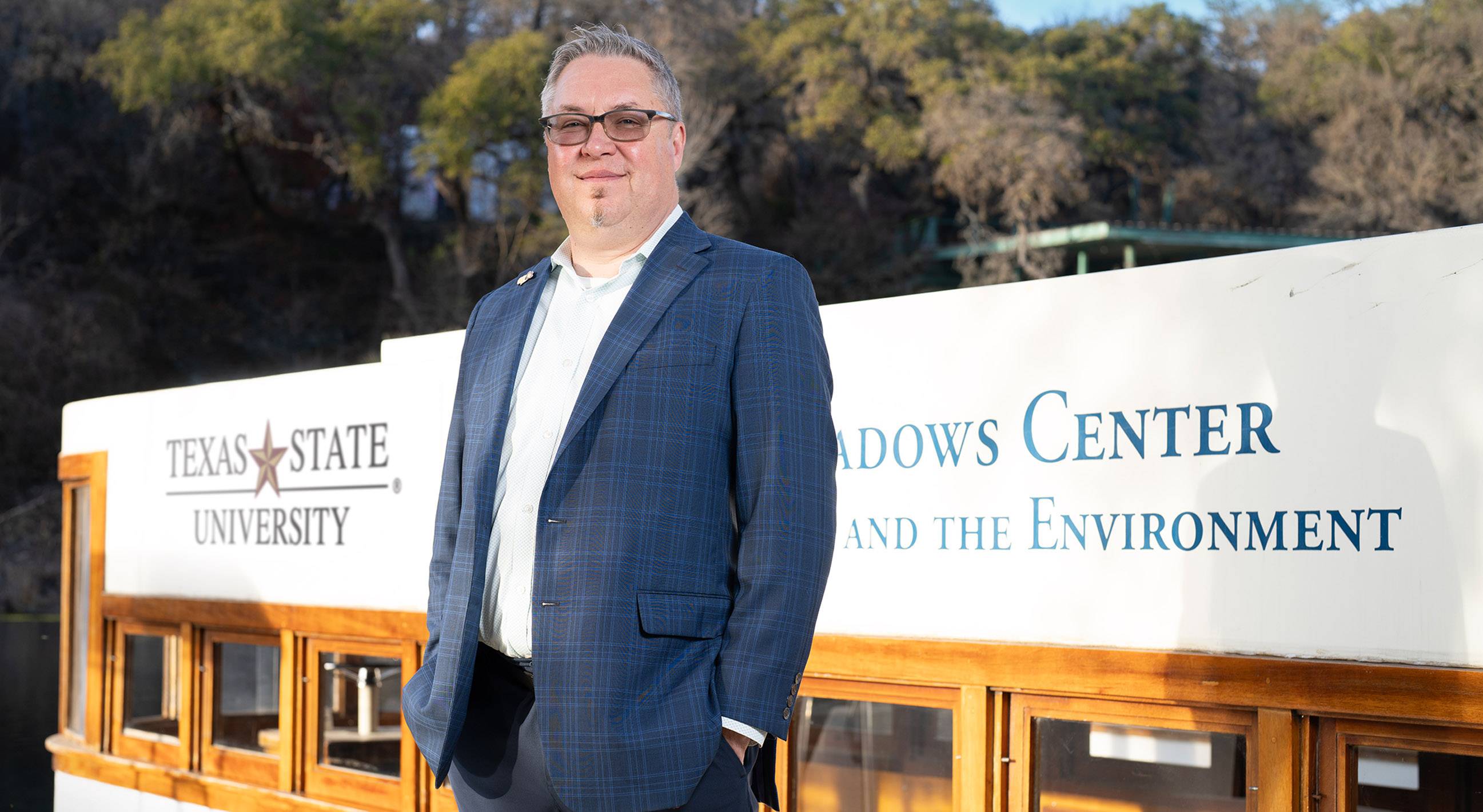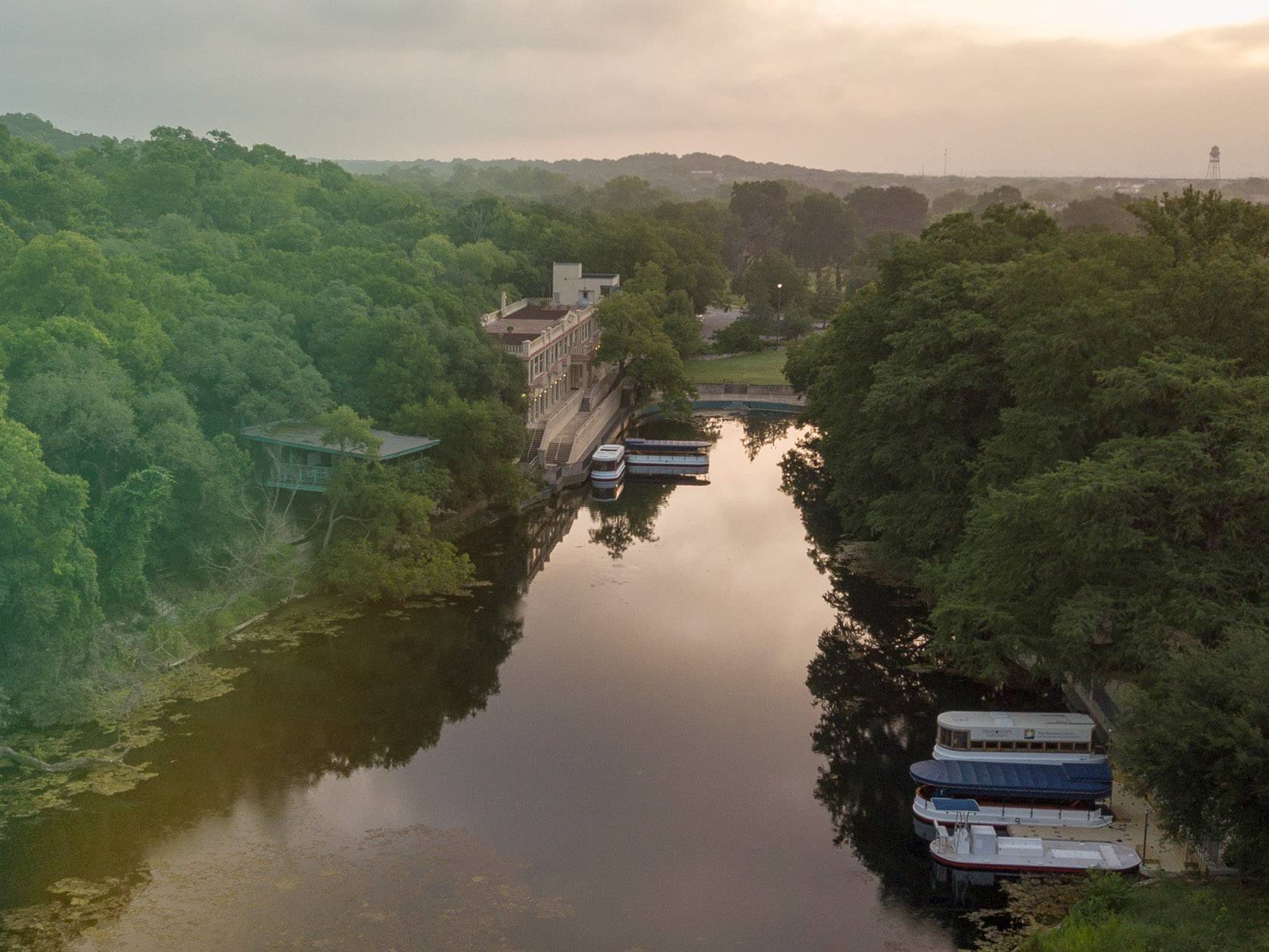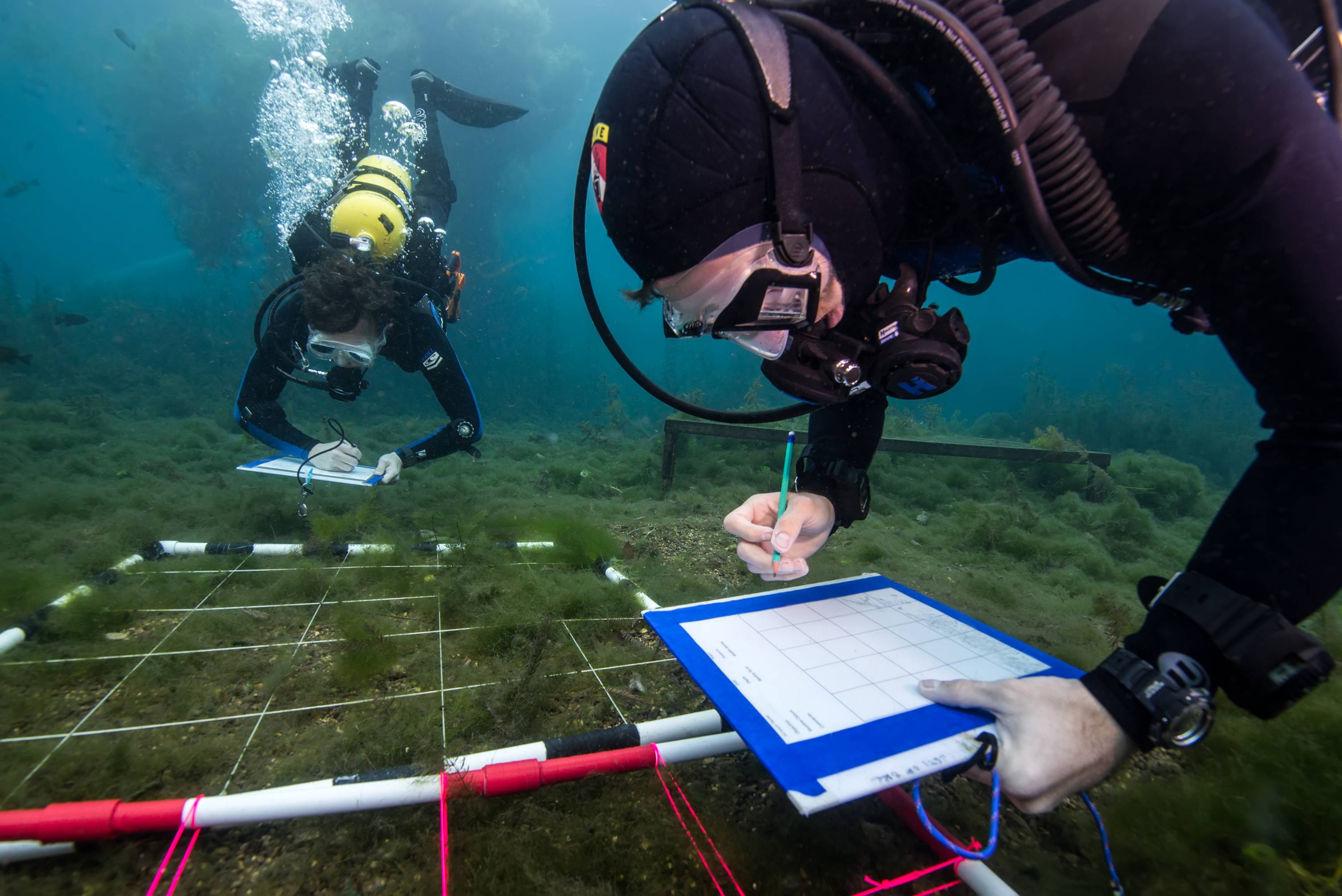Robert Mace has a fitting case study at hand when talking about his favored subject of groundwater sustainability. Mace, the executive director and chief water policy officer at Texas State University’s Meadows Center for Water and the Environment, gestures outside the window of his Spring Lake Hall office to the shimmering waters of the San Marcos Springs, which flow from the Edwards Aquifer.
“The Edwards is a shining example of sustainable groundwater management,” says Dr. Mace, who has a doctorate in hydrogeology. “It’s being managed sustainably only because of the Endangered Species Act. Otherwise, these springs would probably be dry today.”
In his new book, Groundwater Sustainability: Conception, Development, and Application, Mace explores how different groundwater management policies have succeeded or failed in their efforts to provide water for communities without endangering their aquifers.
Mace’s research merges naturally with the mission of the Meadows Center, which focuses on research, education, and stewardship of water resources. We sat down with Mace to talk about his book and the Meadows Center’s latest projects in the areas of climate resilience and “one water.”
What do you want readers to take away from your book?
A deeper understanding of groundwater sustainability and a recognition that the policy decisions of today may close the door to groundwater sustainability in the future. Unfortunately, it seems like human nature is to let things happen until problems arise, and then the policymakers rush in. If you do that with groundwater systems, it’s almost too late to manage sustainably because now you’ve got all this infrastructure and all these people and families that are reliant on pumping unsustainably.
If you look at the Ogallala Aquifer, which is in the High Plains of Texas, we’re pumping the aquifer — mainly for agriculture — at six times the rate that it’s recharging. The water level is going down an average of one foot a year. As a state, 40% of our water resources come from the Ogallala. Is it possible policy-wise to bring the Ogallala Aquifer back into sustainable management? Yes. Will that ever happen? No, because of the difficulty and economic consequences associated with reducing pumping by 80%.
Now, everybody is rushing to the Carrizo-Wilcox Aquifer. It’s a lot of water, but people are not thinking about sustainable management of that system.
What does “one water” mean and how is the Meadows Center working on it?
One water is on the solution side. It’s using the built environment as your source of supply so you can reduce your use of the traditional supply, which is groundwater and surface water. Nontraditional sources could be rainwater harvesting, condensate harvesting, atmospheric vapor harvesting, wastewater reuse, and stormwater reuse.
One example is Blue Hole Primary School in Wimberly. We were involved in putting that together and using rainwater, air-conditioning condensate, and onsite wastewater reuse for their water supply. They’ve been able reduce their use of the Trinity Aquifer, which ties directly to spring flow into the creeks and rivers, by 90%. And they’re saving money.


